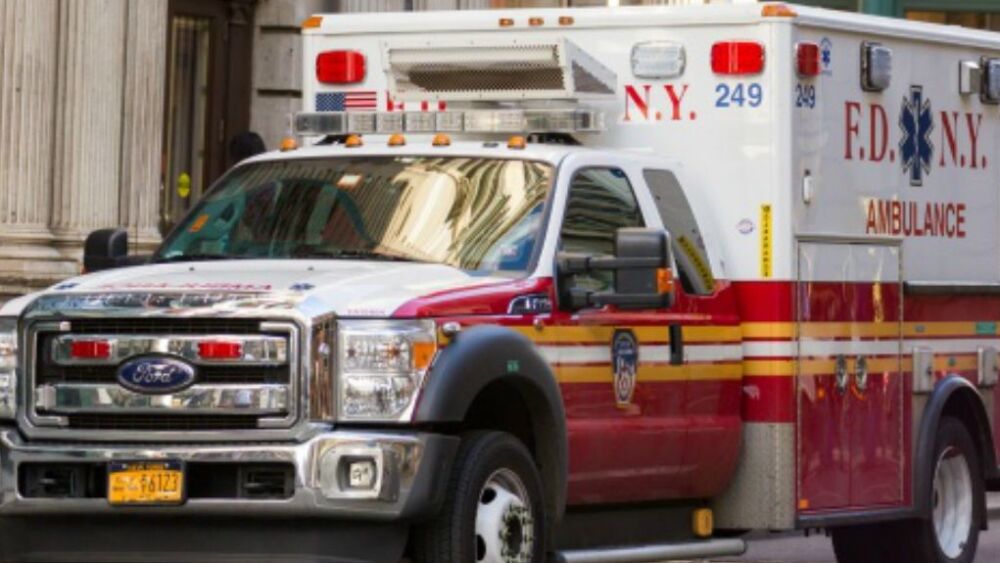By Evan Simko-Bednarski
New York Daily News
NEW YORK ‚ÄĒ In their most dire moments ‚ÄĒ waiting for an ambulance, a fire truck or the police ‚ÄĒ Manhattanites are .
That‚Äôs the conclusion of a report expected Friday from State Sen. Brad Hoylman-Sigal and former city Traffic Commissioner ‚ÄúGridlock‚ÄĚ Sam Schwartz , who found that vehicle speeds in Midtown and lower Manhattan are slower than they‚Äôve ever been ‚ÄĒ and that‚Äôs causing across all agencies to rise to record levels.
Using GPS data from taxicabs and other , Schwartz estimates the average speed of vehicular traffic in Midtown to be just 4.8 mph. The average speed of traffic in all of Manhattan south of 60th St. is slightly faster, but not by much ‚ÄĒ vehicles average 6.9 mph.
‚ÄúSince 1971 we started regularly collecting [traffic speed] data,‚ÄĚ Schwartz told the Daily News . ‚ÄúThese are astoundingly low speeds ‚ÄĒ and they‚Äôre dangerous.‚ÄĚ
Hoylman-Sigal ‚ÄĒ who represents Manhattan‚Äôs West Side ‚ÄĒ told the News that he became concerned about emergency response time after he happened upon a man ‚Äúwrithing in pain‚ÄĚ on W. 28th St. .
‚ÄúWe dialed 911 repeatedly,‚ÄĚ he said of himself and a group of bystanders. ‚ÄúWe tried to flag down a private vehicle, and ran to different corners of the block hoping to see an emergency vehicle appear.
‚ÄúAnd one didn‚Äôt until 37 minutes later,‚ÄĚ he said. ‚ÄúI just find it unacceptable.‚ÄĚ
Hoylman-Sigal said he’s since checked up on the man, who has recovered.
Citywide, crawling traffic has over the past decade, Schwartz and Hoylman-Sigal said.
EMS average response times to life-threatening situations has climbed from roughly 9 minutes and 40 seconds in 2014 to 12 minutes and 26 seconds this year, a 29 percent increase, according to the report. City data show increased travel time is responsible for a minute and a half of the added delay.
Mastering data and EMS performance metrics with Mike Taigman
The NYPD‚Äôs responses to so-called ‚Äúcritical‚ÄĚ incidents ‚ÄĒ like shootings, robberies or burglaries ‚ÄĒ has gone up 23 percent over the same period, from just under 8 minutes in 2014 to 9 minutes and 41 seconds in 2024. Most of that difference ‚ÄĒ 1 minute and 23 seconds ‚ÄĒ can be ascribed to increased travel time.
The FDNY‚Äôs medical emergency response time has soared in 10 years, up from 8 minutes and 19 seconds to 14 minutes and 16 seconds ‚ÄĒ a 72 percent climb. Increased travel time due to traffic accounts for 2 minutes of that 6-minute delay.
It was not immediately clear what other factors have contributed to the dramatic increase in the FDNY’s medical response time, but the mayor’s yearly management report said the department was currently working to reduce turnaround times while dropping patients off at local hospitals.
In emergencies, minutes matter, Schwartz and Hoylman-Sigal contend, citing multiple studies indicating that an extra minute or two in travel can be the difference between survival or recovery in or cardiac arrest incidents.
‚ÄúNew Yorkers and visitors are at an increased risk every day due to worsening traffic congestion,‚ÄĚ the report states. ‚ÄúMuch of the added delay [in emergency response times] is due to worsening traffic congestion.‚ÄĚ
Hoylman-Sigal and Schwartz, both proponents of the state‚Äôs congestion pricing program, argue that the tolling plan ‚ÄĒ in June, weeks before it was to go into effect ‚ÄĒ should be brought back immediately to thin out traffic.
But the report puts responsibility on the city as well, calling for a reinstatement of limits to the number of Ubers and Lyfts that can operate in the five boroughs, following City Hall’s decision last year to .
The report also calls for returning the authority to enforce parking rules to the city’s Department of Transportation , which had that mandate until then-Mayor Rudy Giuliani switched it to the NYPD in 1995.
Finally, the report advocates for restoring the position of Traffic commissioner under the Department of Transportation, the position Schwartz held from 1982 to 1986.
‚ÄúThis is a solvable problem,‚ÄĚ Schwartz and Hoylman-Sigal write.
The report comes just days before the start of the , when visiting dignitaries and security cordons cause traffic chaos for much of Manhattan .
D.O.T. officials warned Thursday that all of next week constitutes a ‚Äú‚ÄĚ due to the gathering of world leaders.
‚ÄúNext week is the slowest week of the year [in terms of congestion],‚ÄĚ Schwartz said ‚ÄĒ which naturally could mean even longer response times for police and fire vehicles and ambulances.
‚ÄúDon‚Äôt get sick or get injured,‚ÄĚ he warned.
©2024 New York Daily News.
Visit .
Distributed by













